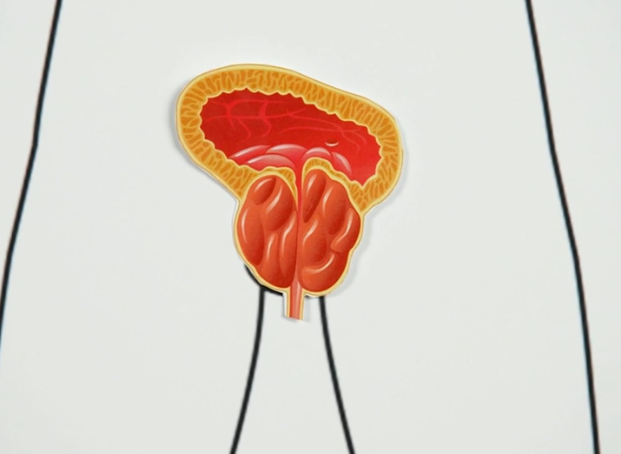When we think about the body and circulation, blood is probably the first thing that comes to mind. But there's another vital fluid that is responsible for many functions within the body: lymph. Unlike the blood, lymph moves in one direction only, towards the heart. Fluid forced out of the bloodstream during circulation is filtered through the lymph, where it removes bacteria, abnormal cells, and other matter. The drainage of lymph around the body ensures it runs properly. It might not get as much attention, but its function is essential.
The Lymph System
The lymph system in the body consists of a network of vessels, nodes, and ducts. It collects and circulates excess fluid.
There are around 500-600 lymph nodes found around the body. The lymph system is part of the immune system, swelling in the case of an infection.
Lymph capillaries connect the small spaces surrounding cells—where excess fluid and proteins from the tissue builds up—to the lymphatic system.
The fluids that collect in these spaces cannot return to the blood vessels, so they are transported via the lymphatic system. Where there is disruption to this process, swelling occurs. The lymph system plays a key role in the digestive process. It's responsible for transporting fat, fighting infections, and removing excess fluid in the intestines.
The villi (cell membrane) in the small intestine contain tiny lymph capillaries called lacteals, that absorb fats and fat-soluble vitamins. The lymph also has an important function as the body's first line of defence against infection. It protects the body from microorganisms.
Lymph function: first line of defence.
The skin acts as a physical barrier, preventing many pathogens from entering the blood stream where they can cause symptoms. The acid of the stomach provides a toxic barrier to pathogens, that make their way into the body. Despite these defences, pathogens can still succeed in entering the blood stream—which is where the lymphatic system kicks into action.
White Blood Cells.
White blood cells called lymphocytes are produced by the lymphatic system. These are also known as T-cells and B-cells. When lymphocytes make contact with viruses, bacteria, and foreign particles in the lymph fluid, they form antibodies, which work to defend the body.
Lymph nodes and vessels aren't the only kinds of lymphatic tissues in the body. The thymus gland, located behind the sternum, secretes hormones crucial to T-cells' production, maturation, and differentiation. Inhaled or swallowed pathogens are filtered by the lymph tissue in the tonsils. The tonsils produce lymphocytes and antibodies.
The spleen is not part of the connected lymphatic system. However, it is a lymphoid tissue. It filters the blood to remove microbes, damaged red blood cells and platelets, and it produces white blood cells.
While not a lymphatic tissue, the bone marrow is part of the lymphatic system, as it's here that B cell lymphocytes mature.
Swollen lymph nodes
There are two reasons for swelling of the lymph nodes. Either the lymph node is reacting to a detected infection, or there has been a direct infection of the lymph nodes. In the first example, when the lymph nodes come into contact with foreign materials in infected tissue, the lymph nodes will react to this detected infection by swelling. Swollen lymph nodes can be a symptom of several viral or bacterial conditions, including glandular fever, tonsillitis, or strep throat.
Lymphedema
When there is a blockage in the lymphatic system, lymphedema—a severe swelling—can present. This is because the protein-rich fluid that is usually drained becomes stuck, commonly due to a trauma such as a sports injury, surgery, or disease.
Encouraging lymph flow
The lymphatic system doesn't have a pump. It relies on pressure, muscle contraction, and one-way valves to squeeze fluid through a network of vessels. However, there are other ways to support lymph flow.
- Water. One is to make sure you drink enough fluids, particularly water. Water keeps the cells hydrated, and encourages the body to flush out waste material.
- Movement. Exercise helps to encourage lymphatic drainage due to muscle contraction. Walking, running, cycling, as well as other types of high or low intensity exercise, encourages lymphatic flow.
- Swimming. Swimming is a particularly good exercise to encourage lymphatic flow, as it involves moving several parts of the body at once, while having the added benefit of low-to-no impact on joints.
- Nutrition. Chemicals and additives in processed foods add to the body's toxic load, which needs to be drained by the lymph system. Eating a diet of fresh, unprocessed food, especially fruit and vegetable servings (which are also high in water) is beneficial to the lymphatic system.
- Deep breathing. Deep belly breathing helps activate the lymph system. Taking deep breaths morning and night, as well as during the day when you remember, will help support detoxification.
- Dry Brushing. Dry brushing the skin at least twice a week helps activate the lymphatic system. Use light pressure and wide, circular motions to feel the benefits.
- Massage. Certain types of massage that target lymphatic drainage aim to help encourage the flow of lymph. Using gentle movements and light pressure, the movement of lymph is stimulated. Massage encourages the flow of lymph when you have areas of swelling, but this kind of massage is now also gaining popularity as an ongoing wellness treatment. During a lymphatic drainage massage, a therapist employs a light, rhythmic, stretch-and-release skin technique to encourage the natural drainage of the lymph.
Article Source: Stars Insider





